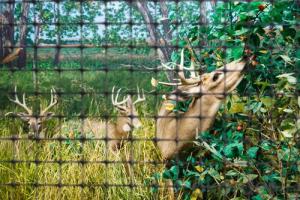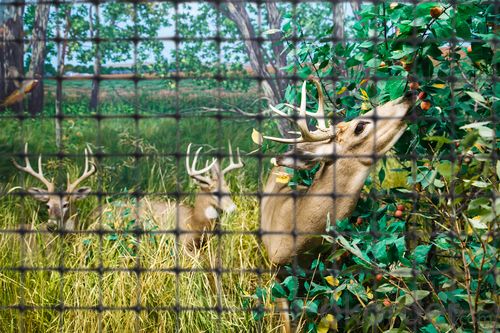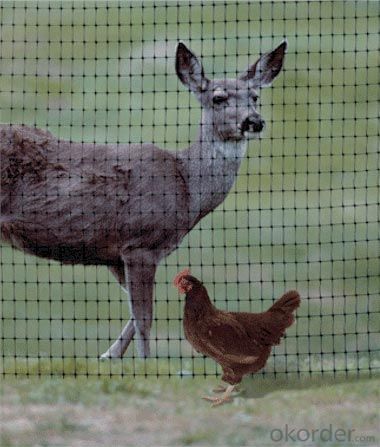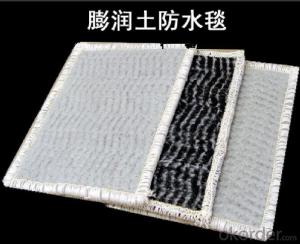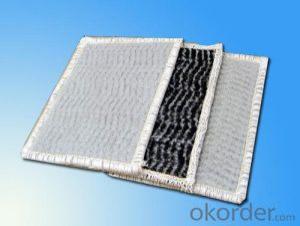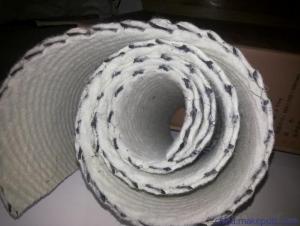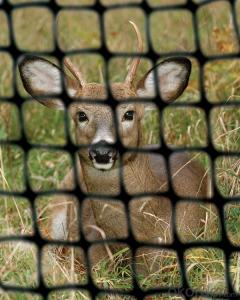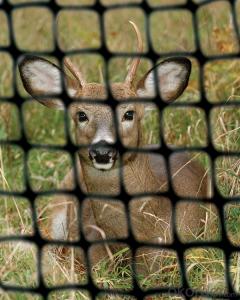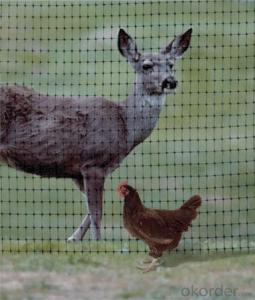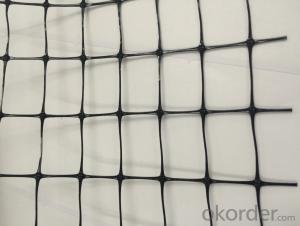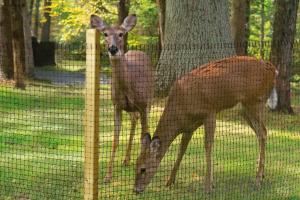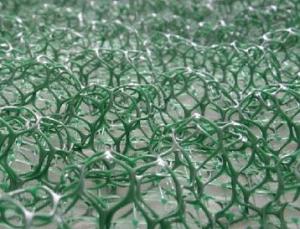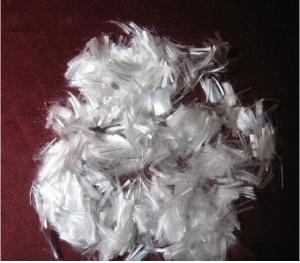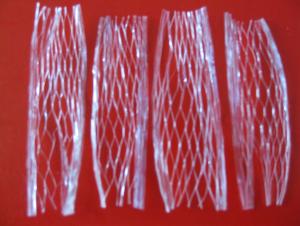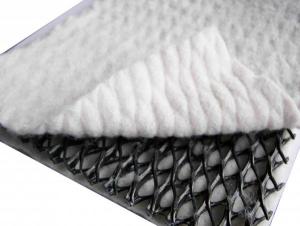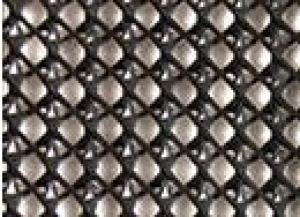PP Plastic Netting/ Deer Netting for Animals
- Loading Port:
- China main port
- Payment Terms:
- TT OR LC
- Min Order Qty:
- 5000 m²
- Supply Capability:
- 1000000 m²/month
OKorder Service Pledge
OKorder Financial Service
You Might Also Like
Plastic netting plastic mesh breeding mesh
Plastic Plain Netting
Colour:white,black,blue and green
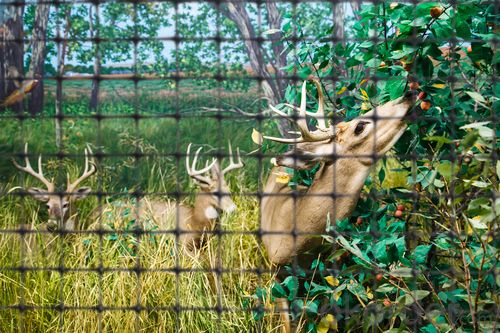
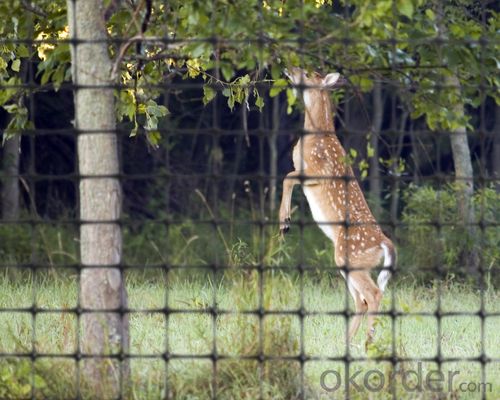

Deer fence introduction:
Deer fencing is a very high strength, lightweight, 3.6ft to 7.3ft high deer fence manufactured from high strength polypropylene BOP plastic netting. Deer have a tendency to forage over large areas and the cost effective deer fencing offers a very effective deer control barrier.
The deer fence is black, UV stabilised and rot proof and unobtrusive as it merges into it's background. Deer fencing is very quick and easy to erect and each roll weighs less than 15kg. The Deer Netting should be installed by battening to the fencing posts to ensure the mesh filaments are not damaged.
Features of the deer neeting fence:
Deer fence is easy to erect and install
Plastic netting has a mesh hole size of 0.06" ,0.08",0.18",0.19"
The BOP plastic netting has a high tensile strength
Plastic mesh is UV stabilized and chemical resistant
Deer fencing rolls are lightweight
Deer fencing is a very high strength, lightweight 1.8m high Deer fence manufactured from polypropylene.
Deer fencing net is supplied on a 100m long roll
Features:
1. Low cost, while has superior strength
2. Has anti-tearing and friction capability
3. Wide range of product availability, some other mesh sizes and weights can also produced as per customers' requirements.
Package/Payment/Delivery:
Package: Usually packed by rolls in plastic film bags with labels inside and then loosely loaded in the container
Payment: 30% in advance before manufacturing,and the balance upon the fax of B/L
Delivery: Within 40 to 60 days after receiving the deposit or L/C.
FAQ:
Q1: What is your minimum order quantity?
A:The minimum order quantity is 5000 ,but it is negotiable.
Q2:What is your payment terms?
A: T/T,Western Union,Paypal,L/C...
Q3:What is your delivery time?
A:Production time usually costs 2-20 days.
Waiting to cooperate with you!
- Q: What are the benefits of using geotextile tubes in coastal erosion prevention?
- Geotextile tubes offer several benefits in coastal erosion prevention. Firstly, they provide an effective barrier against wave action and tidal forces, reducing the impact on vulnerable shorelines. Secondly, they can be easily installed and removed, making them a flexible solution for temporary or emergency erosion control. Additionally, geotextile tubes are environmentally friendly and can be filled with locally sourced materials, minimizing the need for costly and unsustainable alternatives. Lastly, they can promote natural sedimentation and the establishment of vegetation, further enhancing shoreline stability in the long run.
- Q: How are geotextile tubes used in sediment dewatering?
- Geotextile tubes are commonly used in sediment dewatering processes by containing the sediment and allowing water to drain out. The tubes are filled with sediment slurry and the water slowly drains through the geotextile fabric, leaving behind dewatered sediment. This method is effective in separating solids from water and reducing the volume of sediment for disposal or further processing.
- Q: What are the different types of geosynthetic reinforcements for tunnel construction?
- There are several types of geosynthetic reinforcements commonly used in tunnel construction, including geotextiles, geogrids, geocomposites, and geocells. Geotextiles are permeable fabrics that provide separation, filtration, and drainage, while geogrids are high-strength grids used for soil stabilization and reinforcement. Geocomposites combine different geosynthetic materials to offer multiple functions, such as drainage and reinforcement. Geocells are three-dimensional honeycomb-like structures that provide confinement, stability, and reinforcement to the surrounding soil.
- Q: What are the key considerations when using geosynthetic materials in bridge construction?
- When using geosynthetic materials in bridge construction, some key considerations include the selection of the appropriate type of geosynthetic material based on the project requirements, understanding the load-bearing capacity and durability of the material, ensuring proper installation techniques are followed, and conducting regular inspections and maintenance to ensure the long-term performance of the geosynthetic materials. Additionally, it is important to consider the potential environmental impacts and compatibility of the geosynthetic materials with other components of the bridge structure.
- Q: What is the purpose of using geocomposites in pond and lagoon applications?
- The purpose of using geocomposites in pond and lagoon applications is to provide an effective and reliable solution for containment and environmental protection. Geocomposites offer a combination of geotextile and geomembrane materials, enhancing the performance and functionality of ponds and lagoons by providing reinforcement, filtration, and separation. They help prevent soil erosion, control water flow, and protect against leaks and contamination, ensuring the longevity and sustainability of these water containment systems.
- Q: What are the different installation guidelines for earthwork products?
- The installation guidelines for earthwork products may vary depending on the specific product being used. However, some general guidelines to consider include: 1. Preparing the site: Clear any vegetation, debris, or existing structures from the area where the earthwork product will be installed. 2. Excavation: Dig a trench or hole of the appropriate size and depth to accommodate the product. 3. Compaction: Compact the soil at the bottom of the excavation to provide a stable base for the earthwork product. 4. Placement: Carefully place the earthwork product into the excavation, ensuring it is properly aligned, level, and positioned according to the manufacturer's instructions. 5. Backfill: Fill the space around the product with select backfill material, compacting it in layers as necessary to provide stability and prevent settling. 6. Securing: If required, secure the earthwork product using appropriate fasteners or connectors as specified by the manufacturer. 7. Finishing: Complete any additional steps such as grading, compaction, or landscaping to ensure the earthwork product is properly integrated into the surrounding environment. It is crucial to consult the specific installation guidelines provided by the manufacturer for the earthwork product being used, as they may include additional or specific instructions for optimal installation.
- Q: Can earthwork products be used in stormwater detention systems?
- Yes, earthwork products such as geotextiles, geogrids, and erosion control blankets can be used in stormwater detention systems. These products help with soil stabilization, erosion control, and filtration, ensuring the proper functioning and effectiveness of the stormwater detention system.
- Q: Civil Engineering and Materials Science and Engineering Which professional work later? The The Is there a working environment? The
- Civil engineering employment is wide. I am a graduate of civil engineering, in the design institute to do structural design.
- Q: Seeking 3500 words civil engineering materials, urgent use
- Civil engineering practice, through the practice of their own training into qualified engineers. 3. To enhance the educational concept of civil engineering case teaching is conducive to cultivating civil engineering application of talent education and teaching methods, is the demand for civil engineering industry application of talent response, and ultimately help to improve the civil engineering graduates of the employment competitiveness
- Q: Do earthwork products require any special installation techniques?
- Yes, earthwork products often require special installation techniques due to their weight, size, and composition. These techniques may include proper site preparation, grading, compaction, and drainage considerations to ensure the stability and longevity of the installation. Additionally, some earthwork products, such as geotextiles or geogrids, may require specific methods for anchoring or joining them together. It is important to follow manufacturer guidelines and consult with professionals experienced in earthwork installations to ensure proper techniques are employed for optimal results.
Send your message to us
PP Plastic Netting/ Deer Netting for Animals
- Loading Port:
- China main port
- Payment Terms:
- TT OR LC
- Min Order Qty:
- 5000 m²
- Supply Capability:
- 1000000 m²/month
OKorder Service Pledge
OKorder Financial Service
Similar products
Hot products
Hot Searches
Related keywords
